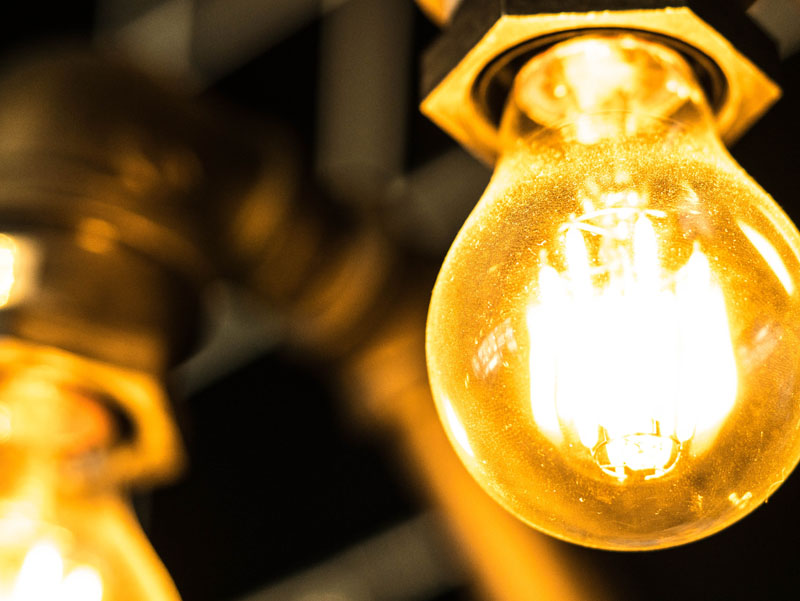Adjusting White Balance in a camera is an important step in ensuring that the colors in your photographs are accurate and true to life. If the White Balance is off, the colors in your photos may appear overly warm or cool, or may be distorted in other ways.
What is White Balance and why is it important?
White Balance is a setting in your camera that helps to ensure that the colors in your photos are accurate and natural-looking. It does this by adjusting the overall color temperature of the image to match the lighting conditions under which the photo was taken.
The color temperature of light is measured in degrees Kelvin (K).
Different light sources have different color temperatures, and this can affect the way that colors appear in your photos. For example, daylight has a color temperature of around 5500K, while incandescent light bulbs (such as those found in most homes) have a color temperature of around 2700K.
If the White Balance in your camera is not set correctly, the colors in your photos may appear overly warm (yellow/orange) or cool (blue). This can be particularly noticeable in photos that contain a mix of warm and cool light sources, such as a photo taken indoors with both natural light and incandescent lighting.
Adjusting White Balance helps to correct these color distortions and ensure that the colors in your photos are accurate and natural-looking.
How to adjust White Balance manually
There are a few different ways to adjust White Balance in a camera
Using the camera’s White Balance presets
Most cameras come with a number of pre-set White Balance options, such as “daylight,” “cloudy,” “tungsten,” and “fluorescent.” These presets are designed to automatically adjust the color temperature of the image to match the lighting conditions under which the photo was taken.
To use the White Balance presets on your camera, select the desired preset from the camera’s menu or by using the dedicated White Balance button (if your camera has one). The camera will then adjust the White Balance automatically.
Using a custom White Balance
If the White Balance presets on your camera are not producing the desired results, you can create a custom White Balance by taking a photo of a neutral gray or white object under the lighting conditions in which you will be shooting.
The camera will use this photo to determine the correct color temperature and adjust the White Balance accordingly.
To create a custom White Balance:
- Set your camera to manual White Balance mode.
- Take a photo of a neutral gray or white object under the lighting conditions in which you will be shooting.
- Use the camera’s menu to select the custom White Balance photo as the reference image.
- The camera will use this reference image to determine the correct color temperature and adjust the White Balance accordingly.
Adjusting the color temperature manually
Some cameras also allow you to manually adjust the color temperature of the image by setting the White Balance in degrees Kelvin (K). This can be useful if the White Balance presets or custom White Balance are not producing the desired results.
To adjust the color temperature manually, use the camera’s menu or White Balance button to access the manual White Balance setting. Then, use the camera’s controls to adjust the color temperature in increments of degrees Kelvin.
It can be helpful to use a color temperature chart as a reference when adjusting the White Balance manually. This will allow you to see the approximate color temperature of different lighting conditions and adjust the White Balance accordingly.
Pros and cons of adjusting White Balance manually
Adjusting White Balance manually has both pros and cons:
Pros
- Greater control over the final image: By adjusting White Balance manually, you have greater control over the final appearance of the image. This can be particularly useful in difficult lighting conditions or when shooting in a mixed lighting environment.
- More accurate colors: Adjusting White Balance manually allows you to fine-tune the colors in the image to ensure that they are as accurate as possible.
- Creative opportunities: Adjusting White Balance manually can also be used as a creative tool to achieve a desired effect in your photographs. For example, you could intentionally adjust the White Balance to create a warm, cozy atmosphere in a portrait, or to create a cool, moody atmosphere in a landscape.
Cons
- Time-consuming: Adjusting White Balance manually can be time-consuming, especially if you are shooting in a variety of lighting conditions.
- Requires a good understanding of color temperature: Adjusting White Balance manually requires a good understanding of color temperature and how it affects the appearance of colors in an image. If you are not familiar with color temperature, it may be difficult to achieve the desired results.
- May not produce consistent results: If you are shooting in rapidly changing lighting conditions, manually adjusting White Balance may not produce consistent results from one photo to the next.
Tips on when to adjust White Balance
There are a few common situations when adjusting White Balance may be necessary:
Shooting in mixed lighting conditions
If you are shooting in an environment with a mix of warm and cool light sources, the White Balance may need to be adjusted to ensure that the colors in the image are accurate.
Shooting under artificial light
Photos taken under artificial light (such as tungsten or fluorescent lighting) may require White Balance adjustments to correct color distortions.
Shooting in unusual lighting conditions
If you are shooting in unusual lighting conditions (such as in the early morning or late evening), the White Balance may need to be adjusted to ensure that the colors in the image are accurate.
Creating a specific mood or atmosphere
As mentioned above, adjusting White Balance manually can be used as a creative tool to achieve a desired effect in your photographs.
Examples of when to adjust White Balance
There are a few common example situations when adjusting White Balance may be necessary.
Shooting portraits
If you are shooting portraits, you may want to adjust the White Balance to match the skin tone of your subject.
For example, if you are shooting in warm light (such as sunlight or tungsten light), you may want to adjust the White Balance to a cooler setting to avoid giving your subject a yellow/orange cast.
Alternatively, if you are shooting in cool light (such as shade or fluorescent light), you may want to adjust the White Balance to a warmer setting to add some warmth to your subject’s skin tone.
Shooting in difficult lighting conditions
If you are shooting in lighting conditions that are difficult to reproduce accurately, such as under neon lights or in a venue with mixed lighting, adjusting White Balance may be necessary to ensure that the colors in your images are accurate.
Shooting products
If you are shooting products for advertising or e-commerce, it is important to ensure that the colors in your images are accurate.
Adjusting White Balance can help to ensure that the colors of your products are accurately represented, which can help to avoid customer confusion or disappointment.
Shooting landscapes
In landscape photography, the color temperature of the light can greatly affect the overall mood and atmosphere of the image.
Adjusting White Balance can help to bring out the colors of the landscape and create a desired mood or atmosphere.
For example, adjusting the White Balance to a warmer setting can create a cozy, inviting atmosphere, while adjusting it to a cooler setting can create a crisp, fresh atmosphere.
Shooting in black and white
If you are shooting in black and white, adjusting White Balance may not seem necessary.
However, adjusting White Balance can still affect the tonal range and contrast of your black and white images.
Experimenting with different White Balance settings can help you achieve the desired tonal range and contrast in your black and white images.
Frequently asked questions about White Balance
Here are some of the most frequently asked questions about adjusting White Balance.
Can White Balance be adjusted in post-processing?
Yes, White Balance can be adjusted in post-processing using image editing software such as Adobe Photoshop or Lightroom.
However, it is generally easier and more accurate to adjust White Balance in-camera, as this will ensure that the colors in the raw image data are as accurate as possible.
Is it better to adjust White Balance in-camera or in post-processing?
It is generally better to adjust White Balance in-camera, as this will ensure that the colors in the raw image data are as accurate as possible.
However, there may be situations where it is more convenient or necessary to adjust White Balance in post-processing, such as if you are unable to adjust the White Balance in-camera or if you want to create a specific mood or atmosphere in your image.
Can White Balance be left on auto?
Most cameras have an auto White Balance setting that can be used in a variety of lighting conditions.
While the auto White Balance setting can be convenient, it may not always produce the most accurate colors.
In situations where color accuracy is important, it is generally better to adjust White Balance manually or use a specific White Balance preset.
Is it possible to have multiple White Balance settings in one photo?
Yes, it is possible to have multiple White Balance settings in one photo if the photo contains multiple light sources with different color temperatures. In these cases, the White Balance may need to be adjusted to match the dominant light source or to achieve a desired effect.
Do all cameras have the same White Balance options?
No, different cameras may have different White Balance options and controls. It is important to refer to your camera’s manual or online documentation to understand the specific White Balance options and controls available on your camera.
Can White Balance be adjusted on a smartphone camera?
Yes, most smartphone cameras have a White Balance setting that can be adjusted manually or by using pre-set options.
To access the White Balance setting on a smartphone camera, open the camera app and look for a setting or option labeled “White Balance,” “color temperature,” or something similar. Some smartphone cameras may also have an “auto White Balance” setting, which can be convenient in a variety of lighting conditions.
Is it possible to achieve accurate colors without adjusting White Balance?
While it is possible to achieve accurate colors without adjusting White Balance, it is generally more difficult and may require more post-processing.
Adjusting White Balance in-camera ensures that the colors in the raw image data are as accurate as possible, which can save time and effort in post-processing.
Conclusion
In conclusion, adjusting White Balance in a camera is an important step in ensuring that the colors in your photographs are accurate and true to life.
While it can be time-consuming and requires a good understanding of color temperature, adjusting White Balance manually allows you to fine-tune the colors in your images and can even be used as a creative tool.
If you are shooting in a variety of lighting conditions or if color accuracy is important, it is generally recommended to adjust White Balance manually or use a specific White Balance preset.


